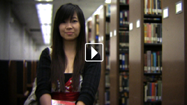Teacher responses to the 2010 release
The following is a list of teacher responses to their "value-added" ratings during the intial release in 2010. See the most recent responses »
The Times gave LAUSD elementary school teachers rated in this database the opportunity to preview their value-added evaluations and publicly respond. Some issues raised by teachers may be addressed in the FAQ. Teachers who have not commented may do so by contacting The Times.
|
|
 Delicious
Delicious
|
 Digg
Digg
|
 Facebook
Facebook
|
 Twitter
Twitter
|





The motive of The Times is laudable. No one can be satisfied with the present state of public schools, especially in big city districts like LAUSD where the high school drop-out rate is close to 50% at many schools. At my elementary school, 3/4 of the students can't read at the appropriate grade level. For the most part, the yearly state tests are fair and comprehensive. But what I think The Times has done in this large and complex debate, essentially, is jump the gun on the value-added theory, and has, in the process, unjustly damaged the reputation of thousands. And in exchange for accomplishing...what?
Why is publishing teacher identities and test scores unjust under the pretext which The Times has used? Because, according to a study just released (July, 2010) by the U.S. Department of Education, "Error Rates in Measuring Teacher and School Performance Based on Student Test Scores," about 90% of the determinants of stadardized test scores are beyond the control of classroom teachers (what the study called "student-level" factors).
Further, researchers found that value-added models of evaluating teachers, such as the one The Times is using, are currently "unstable" predictors of futre individual teacher performance. The Times no doubt knew of these bothersome facts, or should have, prior to deciding to publish.
Until a more reliable method of analysis can be developed, one which incorporates the other 90% of factors which are responsible for student achievement (or lack of) on these tests, then I suggest that The Times add a very prominent disclaimer to their pretty little charts which make clear to readers the above inconvenient but crucial facts.
Otherwise, this project should be called for what it is: A deceptive and possibly libelous witch hunt.
August 20, 2010 at 4:33 a.m.
Thankfully, we have the Accelerated Reader Program at our school.
August 20, 2010 at 3:36 a.m.
Searching for a standard for parents to rate the effectiveness of their child's teacher is a good idea. However, your analysis and results are questionable at best. Your analysis reflects the lack of standardization in any statistical analysis. In the following paragraphs, I will point out the errors of assumption, you have made and the specific Third Grade environment you do not account for.
1. In any statistical analysis, you must show and detail the mathematical assumptions and differences you find in data. You failed to reflect this point.
2. In all of the school districts in California, there are various calendars such as Year Round and Traditional Schedules.
3. In every school, the administration plays a serious role in how students move from grade to grade. The actual movement of students from one grade level to the next is different from one administrator to the next. A large percentage of administrators tend to micro-manage the placement of each student.
4. In many of the elementary schools in LAUSD, there is actual red-lining of student placement. My peers from my current school and other schools in the district reflect the groupings by student ability. Those students who are identified as gifted are grouped with the same teacher year after year. Therefore, when you compare one teacher's growth with another teacher with the low achievers, there is a major difference in student improvement in state test scores. When comparing a teacher who consistently gets high achieving students with a teacher who consistently gets the lowest achieving students, there is a huge disparity in the comparison of the results. On norm day in October, adjustments are made to insure the highest achieving students are grouped together and the lowest achieving students are assigned to the teacher who can handle them. These lower achieving students are generally children with special needs such as learning disabilities and behavioral issues. The simple balance of classrooms is not adhered to at all. Therefore, any comparison between one teacher to another on the same grade level is not an actual measurement of teacher effectiveness.
5. A new trend in LAUSD is looping. Sometimes a teacher continues on with the same students to the next grade level. These students are in the same classroom environment over a two year period. This concept has been used also in middle schools and in high schools across the district and is credited with the ease of students going through classes with peers and teachers as a team. Comparing results of these teachers provide a massive variance in results.
6. Another area of concern is the special needs children including those with academic as well as behavioral issues. These children are mainstreamed along with the regular students. Mainstreaming frequently causes disruption of the learning environment. These students are usually placed with the teacher that is best able to handle this disruption where the test scores will not make any difference in the overall state test results for the classroom. Usually these students are below grade level achievers and need specialized attention in the classroom environment. Many of these children have been held back one grade level and these children are aware that the district only allows one retention. A two year age span frequently exists between the students. For more than ten years, the majority of the third grade students with special needs have been placed in my classroom. The school records reflect this disparity in the third grade classroom environment. Documentation of this ongoing disparity is on file with the LAUSD and UTLA.
In summary, each of these areas I have discussed in this memo substantiates the claim that your analysis is inaccurate and is not based on a standardized measurement. On National Public Radio, your investigative reporter, Jason Felch, was interviewed and pointed out that his data was received from LAUSD officials. The interview also indicates that the LAUSD wholeheartedly agrees with his analysis.
August 20, 2010 at 12:03 a.m.
I teach third grade at a high performing school (2009 API of 941) which serves low income students (79% qualify for free or reduced lunch). The entire state’s CST average math score is 24% lower than my students; and the state's ELA scores are 13% lower. Yet, as their teacher I show negative value added.* Am I really an ineffective teacher? I hope my students who worked so hard all year and the families who supported them are not as disheartened by the value-added data as I am.
*State average ELA proficient and advanced students = 44%. My students = 57%.
State average MATH proficient and advanced students = 65%. My students = 89%.
I encourage parents, readers and interested parties to view this video which helps in trying to understand why the data is faulty. http://www.youtube.com/watch?v=uONqxysWEk8>
August 19, 2010 at 11:06 p.m.
I don't think you can judge my performance as a teacher when their are many factors involved. This is just one test within the 180 days of instruction. However, other factors like poor attendance, behavior issues, and learning dissabilities to name a few hinder student success. I look at each child individually and see where they were the previous year and make sure that that student has shown growth. That would be a better and fair assessment.
August 19, 2010 at 9:53 p.m.
I love teaching and reflect daily on my practice. I firmly believe that I teach the whole child and many subjects beyond reading and math. Standardized tests do not measure character, leadership, creativity, or perseverance. I am confident that I add value to my classroom each and every day. Any parent who is concerned about the results of this study is welcome to come and observe me teach. I am available at your convenience to discuss your child’s unique circumstances.
August 19, 2010 at 8:57 p.m.
I have not been in the same grade or same classroom two years in a row since I began teaching. That has made it hard to have any continuity in my instruction. I am still a relatively new teacher and I have done what I have been trained to do to the best of my ability. I have spent this whole summer taking Best Practices classes. It is my hope that my scores and the scores of my students will improve.
It kills me that the whole "score" is based on one test. You don't take anything else into consideration. You don't take into account that the state of California has moved curriculum that used to be in middle school and even high school down to elementary school. You don't take into account that the standards we are required to teach are NOT developmently appropriate for elementqry school as shown by all the latest brain / learning research.
August 19, 2010 at 8:03 p.m.
thanks
August 19, 2010 at 7:41 p.m.
I feel it is highly irresponsible of the Times to publish a database ranking teachers by their supposed "effectiveness" based solely on the standardized test scores of their students. Value-added scores can be a valuable component in evaluating a teacher's effectiveness, but they should not be used as the sole measure.
Here are just a few reasons why: For one thing, standardized tests cover only two subjects -- mathematics and English language arts. Second, the value-added method totally ignores the number of students in a given teacher's classroom. Of course, a teacher with 35 students will have a much more difficult time increasing student test scores than a teacher with only 20 students. The value-added method also does not recognize that many teachers "team-teach" with one or more other teachers in the same grade level. Teacher A might teach language arts to all of the students in a grade level, while Teacher B might teach math. Using the value-added method, Teacher A's students' standardized math test scores would not reflect his or her teaching effectiveness, but instead, Teacher B's. Also, if there is even one highly-disruptive student in a given classroom, it can affect every student's ability to learn and thus, his or her standardized test scores.
Do I feel that the value-added method of assessing teacher effectiveness is totally useless? Of course not. However, there are a great many other factors on which to judge teacher effectiveness. If the Times publishes these value-added teacher ratings, parents and the public will unfairly judge many great teachers as "ineffective."
August 19, 2010 at 7:12 p.m.
Strange that 90% of my kids this year are advanced or proficient in math. I find this outrageous. How about parents' effectiveness in child rearing while you are at it?
August 19, 2010 at 7:06 p.m.